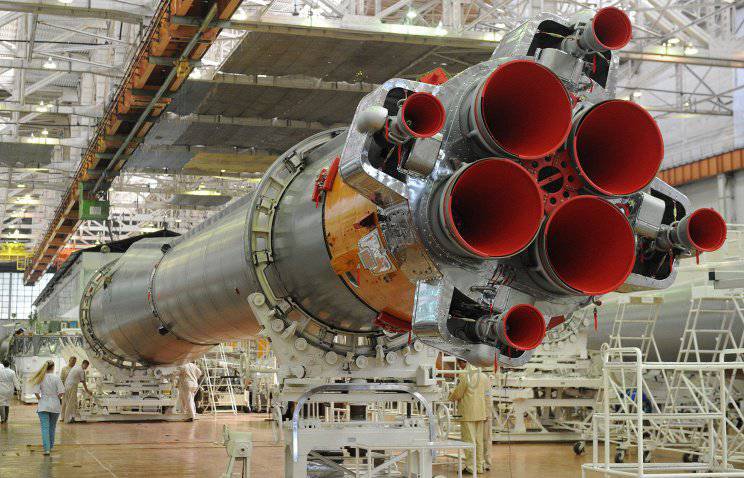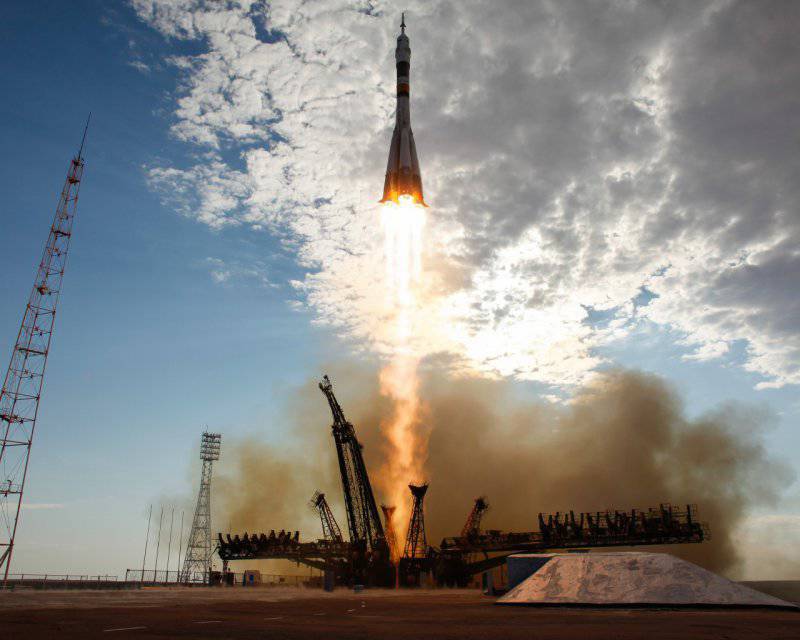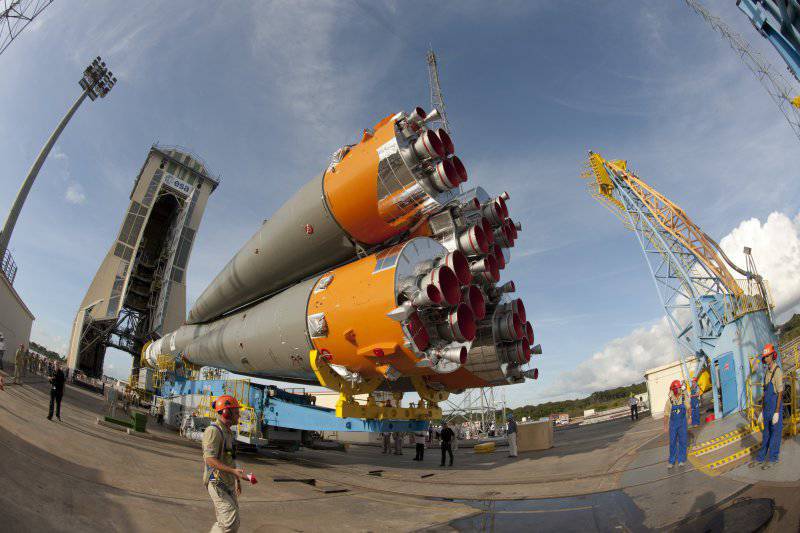Russia will create a super heavy rocket methane fuel
Oleg Ostapenko recalled that in Russia work on the development of new heavy and superheavy rockets is already underway. According to him, at the first stage of the implementation of this program, Roskosmos hopes to get a rocket that can launch from 80 to 85 tons of payload into space. According to Ostapenko, at the first stage the task is not to create a launch vehicle with a payload capacity of 120 tons, since there are simply no targets for such missiles. At the same time, the 85 missile tonnage is still quite enough for the Russian lunar program.
At the same time, the head of Roskosmos noted that in the future the super-heavy rocket will be continuously upgraded “by replacing control systems, engines, etc.”. According to him, at the first stage the engines of the launch vehicle will work on kerosene, oxygen and hydrogen, but in the future it is planned to switch to methane engines, which have yet to be developed. The use of such engines should allow up to 190 tons of payload to be put into orbit. At the same time, Oleg Ostapenko informed the journalists that the launch complex for launching new Russian rockets should appear at the Vostochny cosmodrome currently under construction.

According to the official site of the cosmodrome and the plots on Russian television, the construction of the cosmodrome in the Far East is conducted at a record pace. And this means that the future main Russian space center, which is being built in the Amur Region near the village of Uglegorsk, will be ready in 2015 year. The total area of the reserved territory of Vostochny is 1035 square meters. kilometers In this case, the first launch of the launch vehicle from the new cosmodrome should take place at the end of 2015 of the year, and the first launch into space of a manned spacecraft in the 2018 year.
Earlier, Oleg Ostapenko, at the press conference held at ITAR-TASS, said that the project to create a new Russian super-heavy launch vehicle was included in the federal space program for the 2015-2025 years, with the program itself not approved. Speaking about what kind of domestic enterprise will be engaged in the development of a new rocket, Ostapenko noted that an informed decision will be made. Currently there is a great offer on the Center. Khrunicheva, TsSKB Progress and RSC Energia. The official did not rule out that this project would be a complex, and not a project of just one enterprise. At the same time, according to the head of Roscosmos, a separate platform will not be developed to create a new rocket, existing ones will be involved. As an example, Ostapenko cited the production facilities of TsSKB Progress (Samara city).
The information that TsSKB Progress presented a model of its own future rocket appeared at the end of May 2014. The rocket is a carrier of the super heavy class, which is designed to implement an ambitious Russian program for the colonization of the moon. Samara designers suggested a rather original idea - to design a “methane rocket”, the engines of which would work on liquefied gas, which would complement liquid oxygen. This fuel is currently characterized as quite promising, it is already being developed in other industries. From more traditional kerosene, this fuel is distinguished by a rich raw material base and low cost. Taking into account the development time, the time of rocket exploitation and future problems with kerosene, all this becomes very important.
The TsSKB Progress is well aware of all the disadvantages of kerosene. Today, the Soyuz launch vehicles manufactured by Samarans work on artificial fuel, but initially they flew precisely kerosene, which is produced from certain grades of oil. At the same time, oil fields of this type are gradually being depleted, for this reason, the shortage of kerosene over time will be felt only more and more.
According to Alexander Kirilin, head of TsSKB Progress, using liquefied gas instead of kerosene to put the same payload into orbit requires less 6-7% fuel. The company’s plans today are to create a new two-stage launch vehicle, which so far bears the name Soyuz-5. The enterprise from Samara is currently engaged in the development of its draft project in an initiative manner. At the same time, it is reported that this rocket will have to work on a new, completely eco-friendly type of fuel - liquefied natural gas (LNG) and liquid oxygen.
However, the kerosene with oxygen, on which the Russian Soyuz today fly into space, cannot be attributed to non-ecological types of fuel. But liquefied gas is even cleaner and more efficient. According to experts, the content of toxic substances in the products of burning LNG is approximately 3 times less than when using kerosene, which itself is considered to be a fairly environmentally friendly type of fuel. If we talk about efficiency, then, as already stated above, the use of LNG in rocket engines can save 6-7% of fuel when putting the same cargo into orbit than in the case of traditional kerosene.
At the same time, the development of engines that would work on liquefied natural gas is being conducted today and abroad. For example, by request of NASA, work was carried out on the development of a liquid rocket engine (LRE) of small thrust, as well as with the 340 kgf thrust. In addition, Space-X, with the support of NASA, is working on the creation of an LRE operating on LNG with an order of 300 tons, these engines are planned to be used in Mars and Moon research programs. In addition, by order of the Italian Space Agency, AVIO, together with KBKHA, is working on methane rocket engine for the Vega launch vehicle.
Currently, the leading Western developers most often use hydrocarbon fuel (kerosene) for medium-class launch vehicles, heavy hydrogen (most often) hydrogen carrier rockets, as well as solid fuel boosters, which are installed at the first stage of rockets. Along with this, the cost of a space launch is starting to emerge more and more clearly in the modern space program. It is for this reason that many competitors are starting to rely on cheap rocket engines, training technologies, and fuel components. According to the experts of Progress, the creation of launch vehicles of the super heavy class based on methane engines is one of the possible ways of development. Such missiles will not be inferior in their efficiency to hydrogen carrier, but they will be much cheaper in production and operation, which is especially important today.
Information sources:
http://itar-tass.com/nauka/1246949
http://vpk-news.ru/news/20669
http://www.mk.ru/science/2014/06/03/v-rossii-mogut-sozdat-sverkhtyazheluyu-raketu-na-baze-metanovogo-dvigatelya.html
http://norilskonline.ru/v-mire/kosmos/810-v-rossii-nachalas-razrabotka-metanovoy-rakety.html


Information